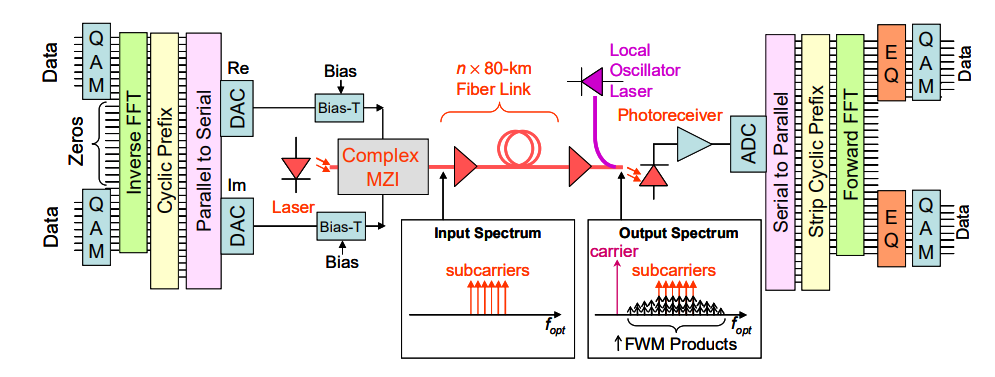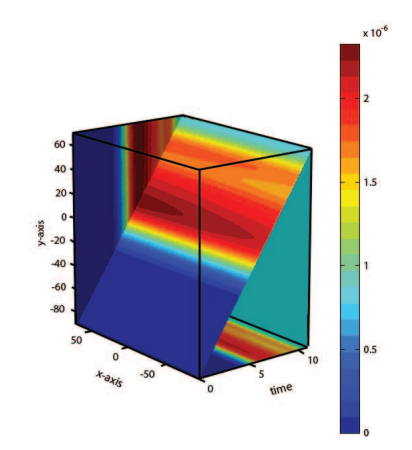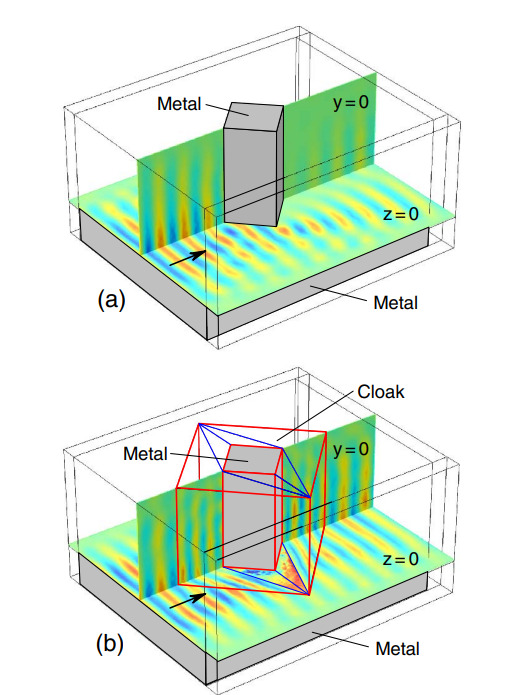
There is an upper limit to the number of optical-channels carry through an optical fiber. The maximum operating power-levels of dense frequency-comb (OFDM) systems were estimated to show their limits of use in Opt.Express(15),pp.13282-13287(2007).
Laser Among known amplifying schemes, it is difficult to pick the best technique for double-pass pre-amplifying before this experiment. We used intricate modeling followed by analytical techniques and simulations to design the first L-band Brillouinerbium fiber laser with double-pass pre-amplification and experimental demonstration: [IEEEJ. Sel. Top. in.Q.Electron.[15],pp.415-421(2009)]
Preserving Causality When optical-pulses propagating through biological media are simulated using the photon-transport-equation (PTE), the causality is lost, which is an error. This was corrected using an ingenious method that represented the pulses using a causal-basis, which is fed to a modified version of the PTE, which preserves causality. [IEEEJ.Sel.Top.Q.Elec.(14),pp.105-112(2008)]

In complex media such as biological tissue, the standard photon-transport-equation (PTE) does not conserve the most important quantities, such as photon energy and momentum. We corrected these deficiencies, re-rederived the PTE, and explained how to map it into Maxwell‘s equations to study body-implanted objects used for sensing and therapy. [Opt.Express(13),pp. pp.389-399(2005);Opt.Express(16),pp.17792-17807(2008)]

Linear transformation- optics (TO) methods for plasmonics does not perform well when used with the usual metal-dielectric media. The remedy is to use designer metamaterials. But all the known methods depend on inhomogeneous metamaterials with anisotropic responses. Using linear coordinate transformations (analytical), We have demonstrated that it is possible to maneuver plasmons through homogeneous metamaterials and construct efficient simulation schemes. [JOSAB(29),pp.2659-2664(2012)]